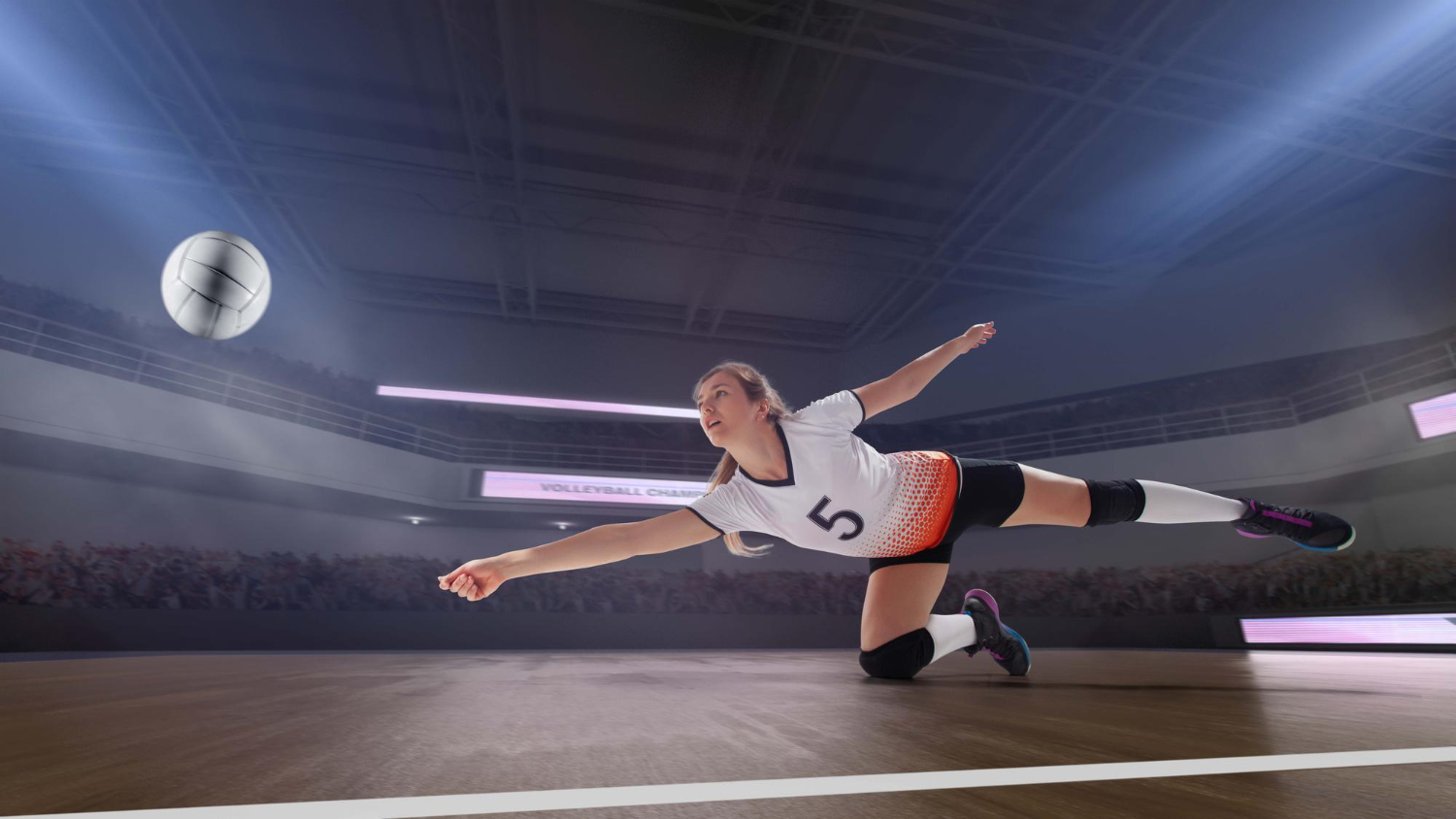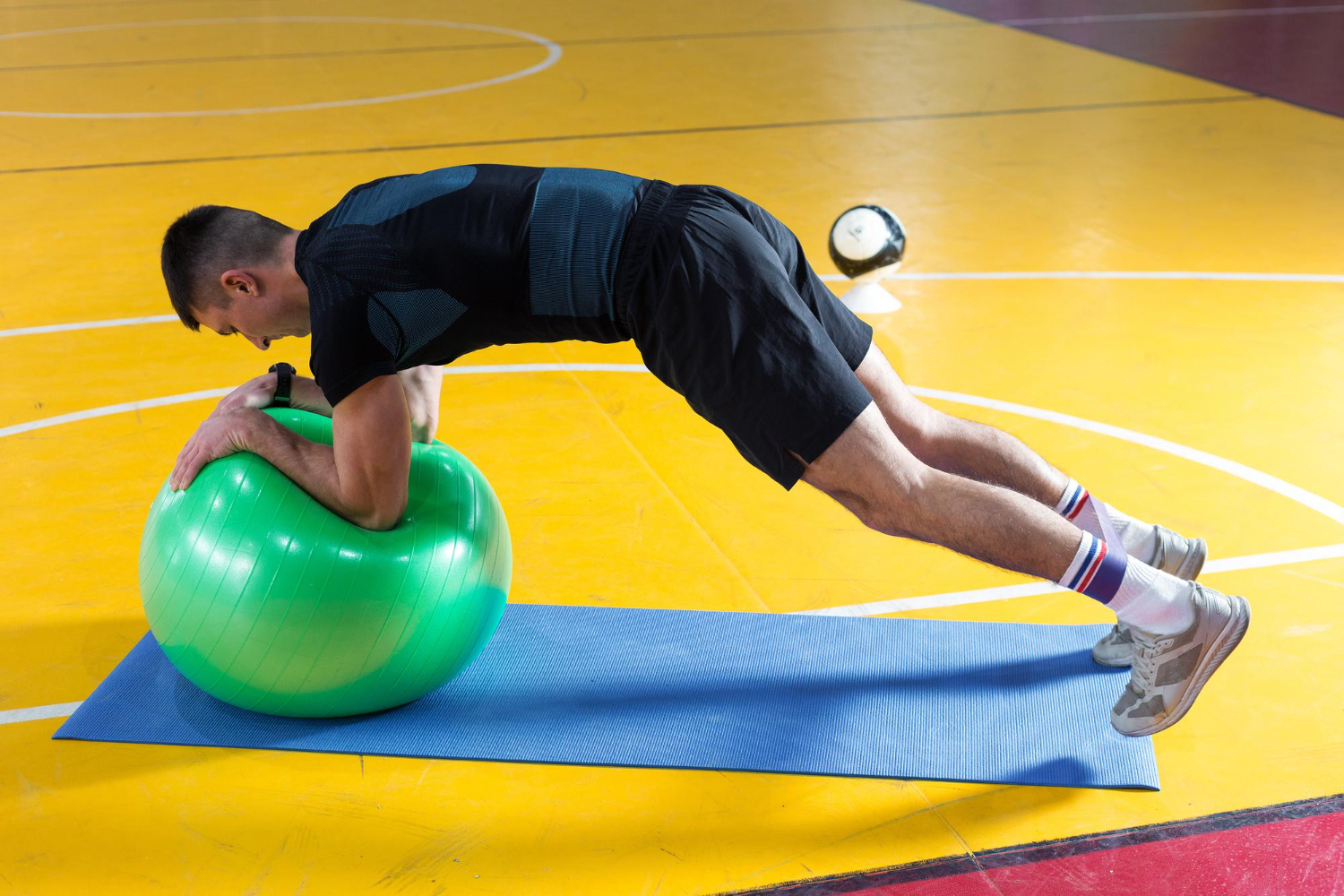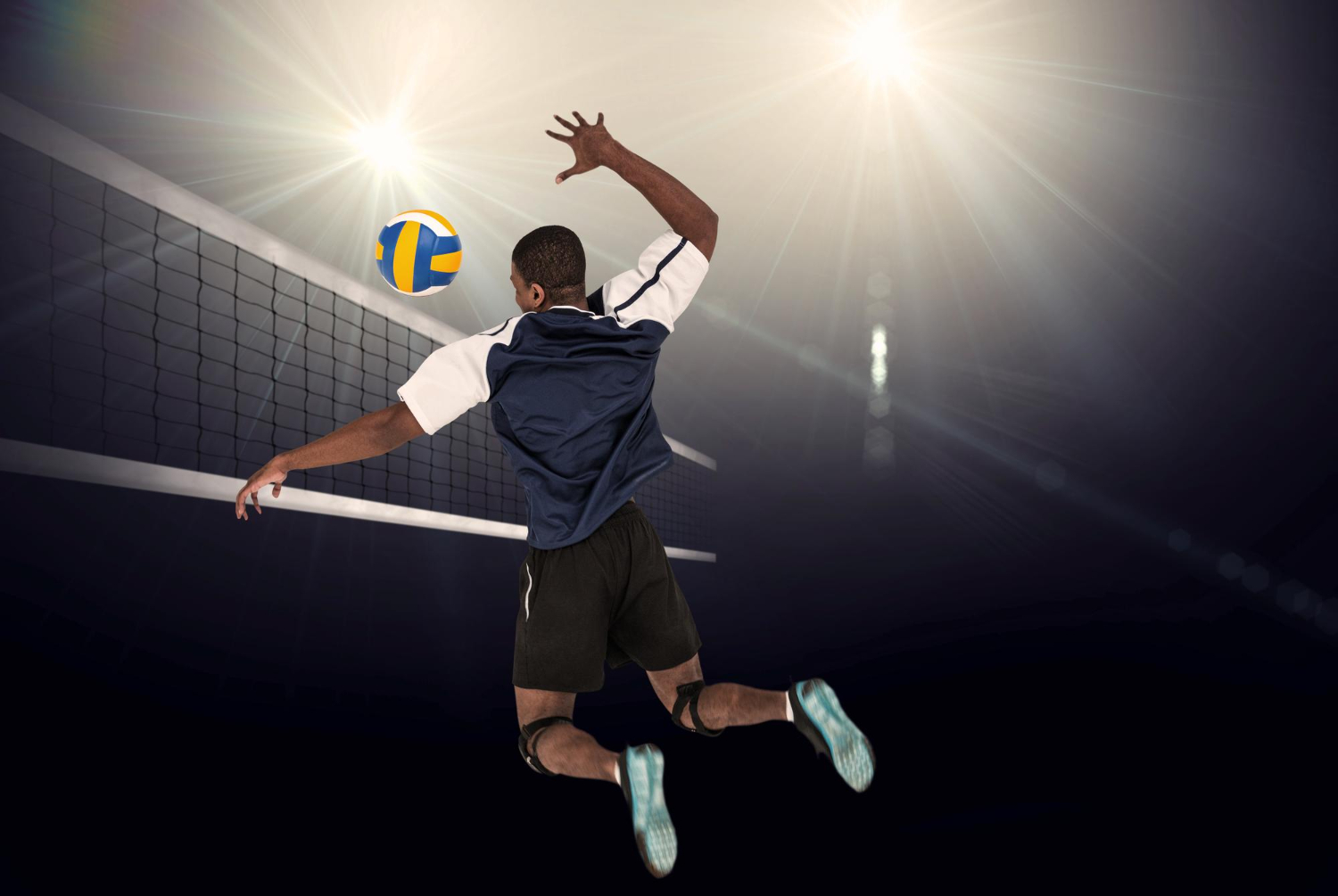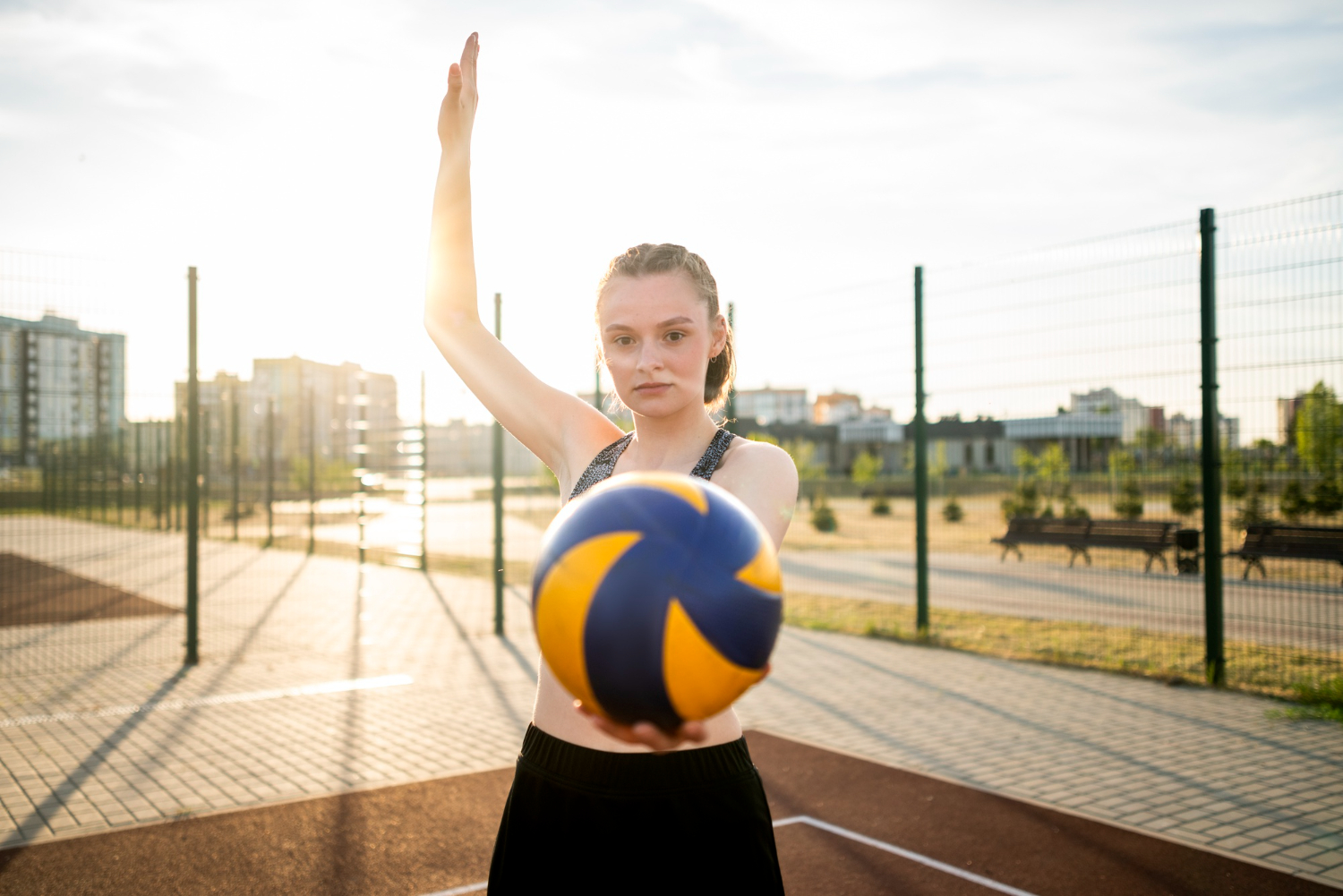Table of Contents
ToggleDefense is the backbone of volleyball. No matter how strong your team’s offense is, you can’t win games without stopping the ball on your side of the court. Good defense requires quick reactions, strong positioning, and effective teamwork, and the best way to develop these skills is through focused drills. In this blog, we’ll cover simple and effective volleyball defense drills that improve digging, blocking, and court coverage, helping you stay ready for every attack and turn defense into offense.
What is Defense in Volleyball?
Defense in volleyball is all about preventing the opposing team from scoring by keeping the ball in play. It involves a combination of digging hard-driven attacks, blocking at the net, and covering open spaces on the court. A strong defense doesn’t just prevent points; it also creates opportunities to transition into offense. Good defensive players are quick on their feet, read the hitter’s intentions, and work closely with teammates to cover every angle of attack.
Why is Defense Important in Volleyball?
Defense is more than just reacting to the ball; it’s about giving your team a fighting chance in every rally. A strong defense doesn’t just keep the ball off the floor; it changes the momentum of the game. Here’s why it matters so much:
- Prevents Points: Good defense stops the other team from scoring easy points off spikes or serves. By reading the hitter and positioning well, defenders can keep powerful shots from hitting the floor.
- Creates Offensive Opportunities: A solid dig or block doesn’t just save the ball, it sets up your setter and attackers for a quick counterattack, turning defense into offense within seconds.
- Maintains Control: Even when the opponent is playing aggressively, good defense helps your team stay calm and in control. Instead of scrambling, your players move with purpose and stay organized.
- Frustrates Opponents: Nothing gets under a hitter’s skin like seeing their best shots repeatedly dug up or blocked. Strong defense can wear down opponents and force them into making mistakes.
- Keeps Rallies Alive: Every dig, block, or save gives your team another chance to win the point. Defense is what turns long rallies into opportunities for momentum-shifting plays.
- Sets Up a Strong Offense: A well-timed defensive play leads to accurate passes, and accurate passes make for better sets and stronger attacks. Without defense, there’s no foundation for offense.
Click here for more game-changing volleyball drills!
Core Principles of Effective Defense in Volleyball
Great defense isn’t just about quick reflexes; it’s about reading the game, working as a team, and making smart decisions under pressure. These principles form the foundation of effective defense and can make the difference between losing a point and winning the rally.
- Anticipation and Awareness: The best defenders don’t just react, they predict. By watching the hitter’s body language and the setter’s movements, players can anticipate where the ball is going and get into position early.
- Positioning: Being in the right place at the right time is half the battle. Good defenders adjust constantly based on the ball, the hitter, and the team’s formation, making sure no part of the court is left unprotected.
- Communication and Teamwork: Defense is never a one-person job. Players need to call the ball, warn each other about tips or blocks, and cover open spaces together. Clear communication keeps the team organized and avoids confusion.
- Discipline: In the heat of the game, it’s easy to chase every ball, but discipline means sticking to your role and trusting your teammates. A disciplined defense stays balanced and avoids leaving gaps.
- Play the Ball: Defense is about effort. Even when a ball looks impossible to save, great defenders make the extra dive, stretch, or hustle. Playing every ball show resilience and often turns near-misses into highlight-worthy saves.
- Transition to Offense: A good defensive play is only the beginning. The true goal is to turn that dig, block, or save into a controlled pass that sets up the offense. Smooth transitions keep the momentum on your side.
Defensive Volleyball Drills
Defense in volleyball is all about quick reactions, smart positioning, and controlled touches that keep the ball alive. These simple yet effective drills are designed to sharpen your passing, digging, and reaction time so you can be more reliable on the court.
Volleyball Defense Drills for Beginners
-
Passing Pairs Volleyball Defense Drill
- Purpose: Builds consistency in passing form, improves ball control, and strengthens communication between teammates.
- How it works: Players pass the ball back and forth using proper forearm passing technique. Gradually increase the speed and vary the height of passes. Add challenges such as moving one step after each pass.
-
Reaction Volleyball Defense Drill
- Purpose: Sharpens reflexes, improves first-step quickness, and trains players to stay alert for unpredictable attacks.
- How it works: The coach randomly tosses or tips balls to different spots on the court. The defender must react quickly and dig or pass the ball back to a target zone.
-
Dig and Move Volleyball Defense Drills
- Purpose: Trains defenders to recover after each dig, maintain balance, and cover more court effectively.
- How it works: The coach hits or tosses a ball for the defender to dig. After the dig, the defender must quickly shuffle to a new spot, ready for the next ball. Repeat for 5–10 continuous reps.
-
Three-Hit Volleyball Defense Drill
- Purpose: Improves teamwork, reinforces proper ball control under pressure, and teaches players how defense transitions into offense
- How it works: The first player passes, the second sets, and the third hits over the net. Rotate roles after each rally so every player practices all three touches.
Volleyball Defense Drills Advanced
Once players have mastered the basics, advanced defensive drills help sharpen reaction speed, refine technique, and prepare for real-game pressure. These drills push defenders to stay quick, read the game better, and build the stamina needed for long rallies.
-
Hitting from Boxes at Full Defense
- Purpose: Sharpens reaction time, reinforces proper defensive base positioning, and improves transitions from defense into offense.
- How it works: Attackers hit balls with power and variety while defenders react, dig, and transition into play. The drill continues with rapid-fire attacks to keep defenders alert.
-
Wall Drill
- Purpose: Trains defenders to handle the speed of hard-driven attacks and builds quick reaction skills under pressure.
- How it works: The defender reacts quickly to dig or control each ball, resetting immediately for the next one.
-
Dig or Die
- Purpose: Builds defensive urgency, keeps players engaged, and develops strong team coordination and focus.
- How it works: Teams rally as usual, but defenders must focus on making every possible dig. Communication and hustle are key to keeping the ball off the floor.
-
Neville’s Pepper
- Purpose: Improves defensive stamina, communication, and teamwork in high-intensity rallies.
- How it works: Defenders dig against continuous attacks for a timed duration, scoring points for clean digs and losing points for errors.
-
Dive and Roll
- Purpose: Builds agility, confidence, and proper technique for executing controlled dives in pressure situations.
- How it works: Defenders dive to dig the ball, then complete a safe roll to quickly return to their feet and prepare for the next play.
-
Read & Transition
- Purpose: Trains anticipation, sharp defensive reads, and quick transitions from defense into offense.
- How it works: Defenders watch the hitter, read the attack, dig the ball, and immediately transition into offense by setting up for a block or counterattack.
-
Dig and Move
- Purpose: Improves movement between defensive plays, builds stamina, and reinforces coverage across different areas of the court.
- How it works: The defender digs one ball, then shuffles or sprints to the next feeder for another dig, continuing the cycle for several reps.
-
5-on-5 with Defensive Focus
- Purpose: Simulates real-game pressure, strengthens defensive responsibility, and emphasizes teamwork in live situations.
- How it works: If the defending team fails to keep the ball alive, they lose the point. Teams rotate roles after each rally.
Common Defensive Mistakes to Avoid
Even experienced players slip up on defense sometimes. The good news is that most mistakes are easy to spot and fix once you know what to look out for. Here are some of the most common defensive errors in volleyball and how to avoid them:
- Poor Positioning: If you’re standing too far back or too close to the net, you won’t have enough time to react. Stay balanced and adjust your depth based on the hitter and the situation.
- Watching Only the Ball: A lot of players lock in on the ball and forget to read the hitter’s body. By watching their arm swing and approach, you can anticipate where the ball is going instead of reacting late.
- False First Step: That first step is everything. A wrong step—or even a step backward—can cost you the chance to reach the ball. Train yourself to move forward or sideways in a quick, explosive first step.
- Breaking Defensive Posture: Standing up too tall or leaning too soon slows you down. Stay low, weight on the balls of your feet, and be ready to move in any direction.
- Poor Platform Technique: If your arms are too far apart, angled incorrectly, or moving too much, your passes won’t be accurate. Keep a solid platform, angle your arms toward the target, and stay steady through contact.
- Lack of Communication: Defense is a team effort. If players don’t call the ball or communicate coverage, gaps open up and attackers take advantage. Loud, clear communication keeps everyone connected and the court covered.
Defense may not always get the spotlight like a big spike or serve, but it’s the backbone of every successful volleyball team. Strong defensive skills keep rallies alive, frustrate opponents, and create opportunities to turn defense into offense. By practicing drills that sharpen reaction time, improve positioning, and build team communication, players can become more reliable and confident on the court. Whether you’re just learning the basics or pushing into advanced defensive training, the key is to stay consistent, stay disciplined, and always give full effort. With the right mindset and regular practice, great defense becomes second nature, and that’s what wins matches.
Achieve Your Volleyball Goals Faster. Our proven system is built for serious athletes. Stop plateauing, start soaring. Find the Perfect Program for You.
FAQs
1. How often should I practice volleyball defense drills?
Ideally, aim for 3–4 practice sessions a week. Balance your time between footwork drills to improve movement and digging drills to sharpen ball control. Short, focused sessions done consistently are more effective than occasional long workouts.
2. What is the best drill to improve digging?
Wall digs and shuffle-and-dig drills are excellent choices. Wall digs strengthen your arms, timing, and platform control by forcing you to react quickly. Shuffle-and-dig adds movement, teaching you to stay low and adjust your body to the ball, just like in real-game situations.
3. Can defense alone win a volleyball match?
Defense plays a huge role, but it can’t win matches by itself. A strong defense keeps the ball in play and frustrates opponents, but points are ultimately scored through offense. The most successful teams strike a balance between solid defensive systems and powerful attacking plays.
4. How can I improve my reaction time for defense?
Incorporate drills that challenge your speed and awareness. Multi-ball drills, quick reaction exercises, and game-like scrimmages force you to respond under pressure. Over time, this sharpens your reflexes and helps you anticipate attacks more effectively.
5. How can a libero improve their passing for defense?
For liberos, footwork and a steady platform are everything. Focus on staying low, keeping your knees bent, and moving explosively to the ball. Repetitive passing drills that emphasize consistency are key. Practicing with different speeds and angles will prepare you for the unpredictability of real matches.
6. What are the main defensive positions in volleyball and their roles?
- Libero: Backcourt specialist focused on serve receive and digging.
- Outside and Right-Side Defenders: Cover the sidelines and support both defense and transition to offense.
- Middle Back: Protects the deep court and often takes hard-driven attacks. Together, these positions ensure every part of the court is defended.
7. How do I improve my reading of the opponent’s attack in defense?
Train yourself to watch more than just the ball. Pay attention to the hitter’s approach, shoulders, and arm swing. These small cues often reveal where the attack is going. Anticipating the shot lets you move early and get into position for a successful dig.
8. What is the role of the libero in volleyball defense?
The libero is the anchor of the defense. Their main job is to handle serve receive and dig attacks, keeping the ball playable for their team. They wear a different colored jersey, can’t attack above the net, but provide stability, control, and leadership in the backcourt.
9. How can I avoid fatigue during extended defensive plays?
Efficient movement is key. Stay low, use small steps, and avoid unnecessary lunges that waste energy. Off the court, conditioning drills, proper hydration, and good recovery routines will help you maintain stamina so you can stay sharp deep into matches.
10. How important is footwork compared to arm positioning in defense?
Both are equally important and work hand in hand. Quick footwork gets you to the right spot in time, while correct arm positioning ensures the ball goes where it needs to. Great defense is about combining the two; if one is off, the other can’t make up for it.
Key Takeaways
- Defense is the backbone of winning volleyball.
- Strong positioning and anticipation stop easy points.
- Defense creates offensive opportunities.
- Communication and teamwork keep the court covered.
- Defense drills in volleyball improve reaction, movement, and transitions.
- Avoid common mistakes like poor posture or lack of communication.
- Consistency and discipline make defense second nature.
Authors
-
Sarah Baker is a dedicated sports and fitness content specialist with a rich background in athletics. As a former high school volleyball player and track athlete, she understands the transformative power of sports in shaping character and fostering discipline. Sarah is passionate about inspiring youth worldwide to embrace sports, hone their skills, and achieve excellence both on and off the court. She continually expands her knowledge through ongoing education in sports performance and fitness, aiming to empower her audience with valuable insights. Currently, Sarah contributes her expertise to the content team at Valley Athletics, a premier sports facility in Fresno, California, dedicated to developing young athletes in volleyball, basketball, and pickleball.
View all posts -

Jonathan stands as a monumental figure in volleyball, boasting accolades such as National Champion, National Player of the Year, and being one of the select few, just thirteen, to achieve All-American status four times in NCAA volleyball history. His illustrious playing journey took flight at Pepperdine University, culminating in his 2005 NCAA Championship win, AVCA National Player of the Year and Newcomer of the Year titles.
View all posts



